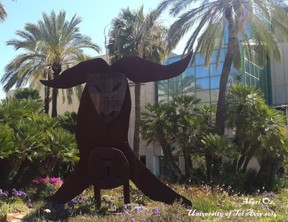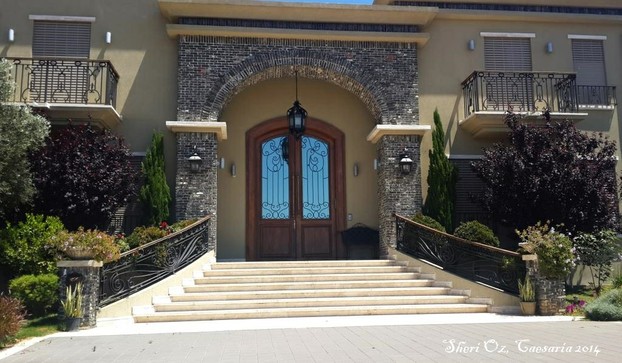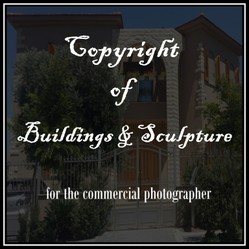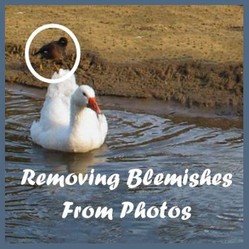If you want to take and use photos of a building that is copyright protected, you can try sending an email to the building managerial office requesting permission. They can just as easily say yes as no, and if you receive a positive response you may be free to go ahead without fear. If your email is ignored, you can proceed with caution. My legal consultant said that in Israel, judges do not like people who do not respond and then pounce later with a law-suit because that seems like entrapment. However, this may not be true in other jurisdictions. You may be well advised to try and get a signed property release. The American Society of Media Photographers has a discussion of this topic on their website.
If you want to take commercial photos of sculptures, buildings or other features in enclosed areas, such as the Tel Aviv University campus or the inside of a train station, for example, you need to send an email to the directorate of the facility in question. Handle their response or lack of response as per the discussion above regarding buildings.
Regarding sculptures in outdoor public spaces, you may not know if a sculpture is on permanent or temporary display, the former meaning it is in the public domain and the latter meaning it is not. Israeli law is somewhat considerate of the naive photographer, stating that if it is reasonable that the photographer did not know that an object is copyright protected, the court may refuse to sue for infringement. This may not be true in some other countries, however, and it is best that you seek out the copyright holder, who may or may not be the owner of the property on which the sculpture stands.
Remember, this discussion pertains to commercial use of your photographs. If your photos are for editorial use, fair use laws are pertinent and you can more freely use the images in a way that is not demeaning to the copyright holder (such as implying that it is in some way connected with illegal activity if that is not true).
For a discussion of editorial and fair use doctrines, click here.


 And, in fact, my legal consultant said that there is no short answer. While these sculptures are out in the open, the university campus is not public property (even though our taxes support it). There is a fence around the entire campus, with gates controlling who enters the property. Therefore, we could regard the entire university campus in the same way as we would an indoor art gallery or a tourist installation or amusement park.
And, in fact, my legal consultant said that there is no short answer. While these sculptures are out in the open, the university campus is not public property (even though our taxes support it). There is a fence around the entire campus, with gates controlling who enters the property. Therefore, we could regard the entire university campus in the same way as we would an indoor art gallery or a tourist installation or amusement park.






 Visiting an Art Gallery With a Two-Year-Oldon 07/27/2015
Visiting an Art Gallery With a Two-Year-Oldon 07/27/2015
 Using the News to Enhance Jewish Identity in Jewish Kidson 07/24/2015
Using the News to Enhance Jewish Identity in Jewish Kidson 07/24/2015
 Xi'an - Not Just Terracotta Warriorson 06/09/2015
Xi'an - Not Just Terracotta Warriorson 06/09/2015
 Sew Your Own Wedding Dress - or Your Daughter'son 02/06/2015
Sew Your Own Wedding Dress - or Your Daughter'son 02/06/2015



Comments
Thanks so much for the clarification :) I am glad I never used those photographs for any commercial purposes!
In this case, VioletteRose, there is no exception. The sculpture is copyright protected and it is located in an area that has been declared not free for commercial photography. Anyone selling products with a photo of this sculpture that does not have permission is in violation. Not worth the risk. You can use photos for editorial use only. The USA has become stricter in this regard than many other places.
Thanks for writing this! This is something really important as most of us create products in zazzle and cafepress using the images we photograph. In fact, the copyright of images of public sculptures is something I was thinking quite often, as I have got numerous images of some of them especially the Cloud Gate in Chicago. The reflections in the sculpture look amazing, and I have seen people posting products in zazzle, featuring the cloud gate. However, I was reluctant to do that since I have read in Wikipedia that public is free to take photographs of the cloud gate, but they can't be used for commercial purposes unless there is permission from the artist or from the City of Chicago. I can't find out if there is any exception to this rule, like if the photograph is a different piece of art created or modified by the photographer.
Persistent is one word for it. Personally, I think I was being an awkward madam! But sometimes it does us good to have a tantrum.
I remember this situation, Jo. And yes, Zazzle can be overly cautious for sure. But for them to make up that phony complaint is absurd! Glad you got it straightened out, even if you never did use those photos. Good for you for being persistent.
It is good that Zazzle and stock photo sites are careful, but then, they are purely commercial enterprises and they really have to be.
Zazzle can be overly-cautious to the point of frustration in protecting perceived copyright. I've run foul of them twice.
The first time, I was in Lyme Regis when HMS Edinburgh came to anchor just outside the bay. Me and a friend took a trip out to see the British warship and much photography ensued. By and by I put two of those photographs onto Zazzle.
One was rejected. According to the company, the Ministry of Defence had lodged a copyright claim against me.
I had one on me that day (plus it's a Tory government, so they rile me by simply existing). I naturally fired off an e-mail to the Secretary of State for Defence, copying in Zazzle AND my MP. I demanded to know why they were wasting tax payer's money trawling the internet looking to penalize people trying to make a living. And did I not, in fact, OWN HMS Edinburgh, on account of my tax money purchasing it.
When nobody replied, I followed it up a week later with a 'why are you ignoring me, Tory scum' (but worded politely) e-mail. I ended up with letters from both the MoD and my local MP, both explaining that they really didn't instruct Zazzle to reject my picture. They were duly scanned in and sent to Zazzle's customer service department.
The sheepish response was that they hadn't actually been instructed by the MoD to remove the photo, they just assumed that they should reject it. I was given permission all round to use my photos.
And being the perverse git that I am, I still haven't got round to putting it back up yet! (It's been two years....)
The point I was making is that Zazzle is quite hot on clamping down on possible copyright violations. Though I guess we shouldn't rely on that.